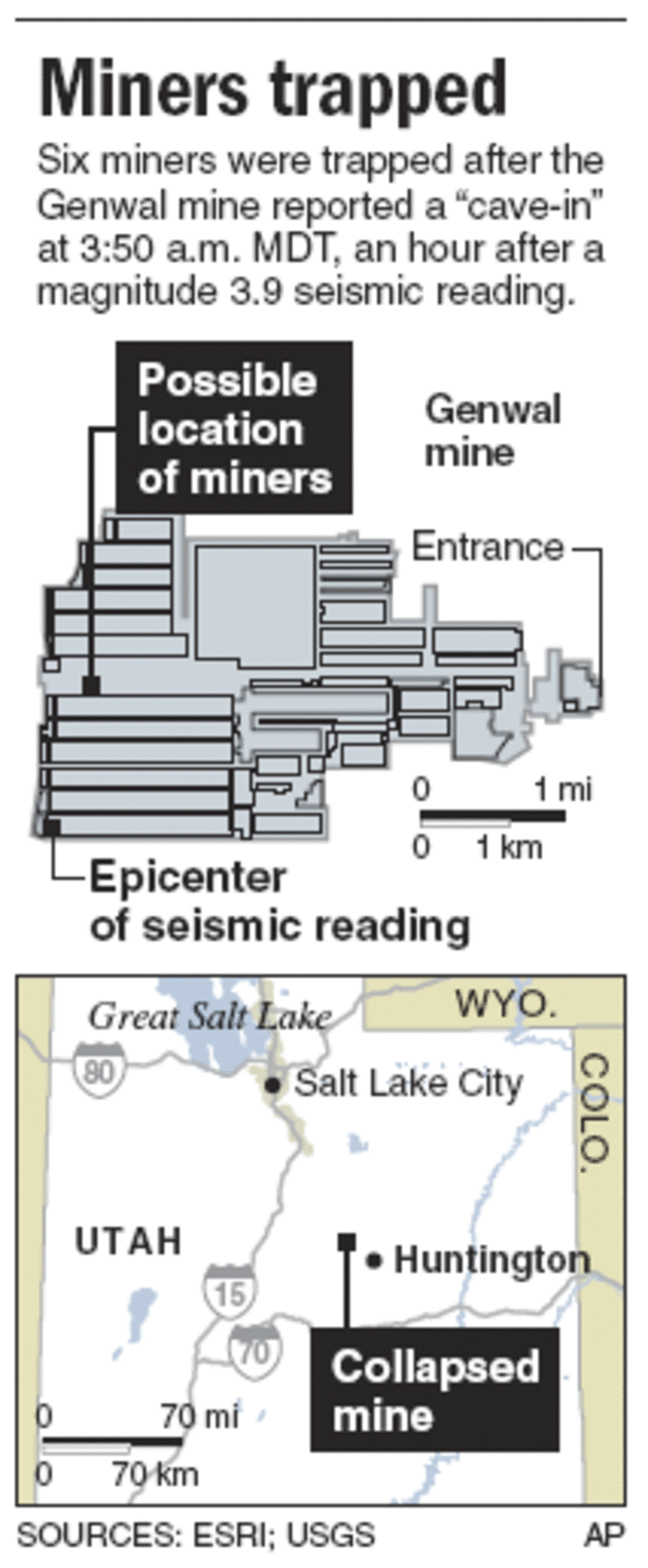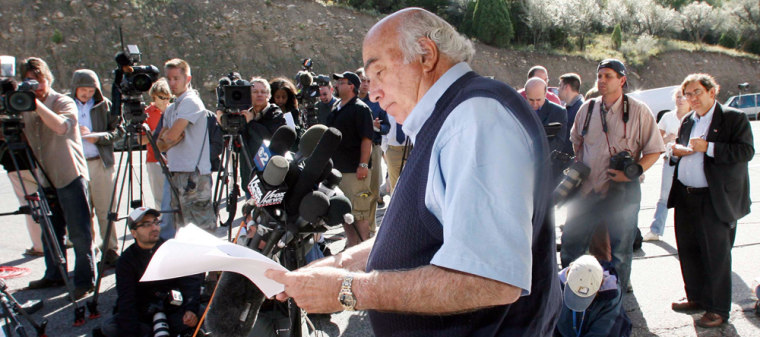Did an earthquake cause a Utah coal mine to cave in, or did the mine collapse trigger the tremors?
A fierce dispute erupted over that question Tuesday, with a top mine executive declaring on national television that he has the science to prove a quake caused the collapse. But seismologists said their instruments recorded shaking from the cave-in and not a natural temblor.
Scientists believe the seismic waves in the area of the Crandall Canyon mine were "the signature of the collapse and that the collapse was not caused by an earthquake," said James W. Dewey, a seismologist at the National Earthquake Information Center in Golden, Colo.
Scientists have not ruled out a natural earthquake since the region surrounding the mine is seismically active, and they do not know the exact time the mine collapsed.
But, Dewey said, "the data we have seen seem more consistent with the collapse being the cause of the 'earthquake' rather than the other way around."
On Monday, University of Utah seismographs recorded seismic waves of 3.9 magnitude near the mine. At least 10 aftershocks were felt more than 24 hours after the collapse, with the strongest registering 2.2 magnitude.
Scientists say quakes caused by mine collapses tend to occur at shallower depths and at different frequencies than natural earthquakes.

The first motions of the Utah disturbance indicated a downward movement consistent with a collapse, scientists said. If it was a natural quake, it would have produced up and down motions on the seismograms. The quake occurred anywhere from 2,000 to 8,500 feet underground.
Mine officials insisted Monday's accident was caused by a natural disaster.
"This was caused by an earthquake, not something that Murray Energy ... did or our employees did or our management did," Robert E. Murray, chairman of Murray Energy Corp. of Cleveland, a part owner of the Crandall Canyon Mine, said at a televised news conference, his voice rising in anger. "It was a natural disaster. An earthquake. And I'm going to prove it to you."
The company released a statement saying the depth of the earthquake occurred in a region that was 3,500 feet deeper than where the miners were.
Length of shaking unknown
The company also claimed the shaking lasted four minutes. Utah and USGS scientists don't know exactly how long the shaking lasted, but they said a 3.9 magnitude quake would cause jolts of just a few seconds.
By contrast, the 9.0 magnitude quake in 2004 in the Indian Ocean caused six minutes of shaking, USGS geophysicist John Bellini said.
There have been numerous examples of mine collapses triggering ground vibrations sometimes confused with quakes. The USGS has recorded at least seven such instances since 1994, including last year's collapse of an abandoned mine in Virginia that registered a 4.3 magnitude.
Although mining activities have been shown to produce quakes, the opposite is rare. Scientists say it's unusual for a temblor to damage a mine unless it was a big one. In 1976, a 7.8 magnitude quake in China wreaked havoc on coal mines beneath the city of Tangshan.
There are no recorded cases in Utah's history of a natural quake triggering a mine collapse, said Walter Arabasz, director of the University of Utah's seismograph stations.
The Crandall Canyon mine is built into a mountain in the rugged Manti-La Sal National Forest, 140 miles south of Salt Lake City, in a sparsely populated area. The region is crisscrossed with geologic faults, and in 1988, a 5.2 magnitude temblor struck 25 miles southeast of the mine.
